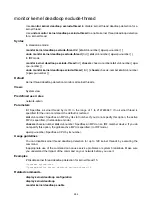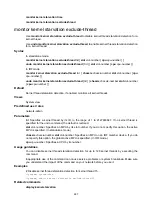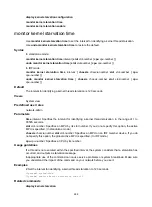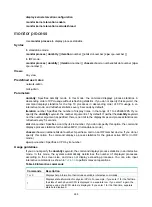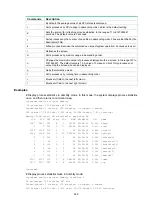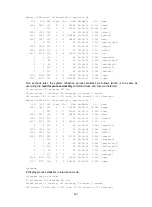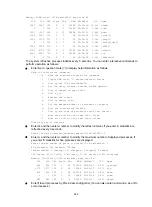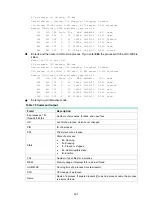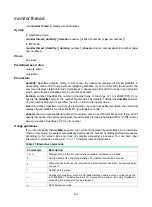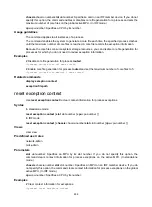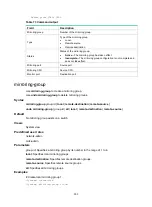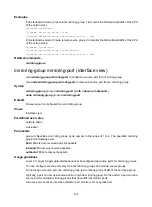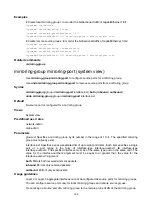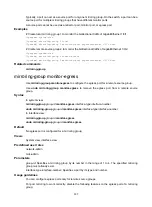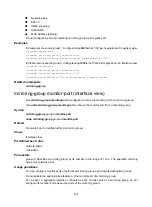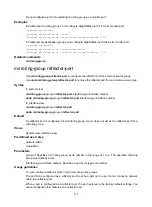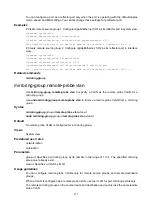
298
chassis
chassis-number
slot
slot-number
: Specifies a card on an IRF member device. If you do not
specify this option, the command enables or disables core file generation for a process and sets the
maximum number of core files on the global active MPU. (In IRF mode.)
cpu
cpu-number
: Specifies a CPU by its number.
Usage guidelines
The command applies to all instances of a process.
The command enables the system to generate a core file each time the specified process crashes
until the maximum number of core files is reached. A core file records the exception information.
Because the core files consume system storage resources, you can disable core file generation for
processes for which you do not need to review exception information.
Examples
# Disable core file generation for process
routed
.
<Sysname> process core off name routed
# Enable core file generation for process
routed
and set the maximum number of core files to 5.
<Sysname> process core maxcore 5 name routed
Related commands
display exception context
exception filepath
reset exception context
Use
reset exception context
to clear context information for process exceptions.
Syntax
In standalone mode:
reset
exception context
[
slot
slot-number
[
cpu
cpu-number
] ]
In IRF mode:
reset exception context
[
chassis
chassis-number
slot
slot-number
[
cpu
cpu-number
] ]
Views
User view
Predefined user roles
network-admin
mdc-admin
Parameters
slot
slot-number
: Specifies an MPU by its slot number. If you do not specify this option, the
command clears context information for process exceptions on the active MPU. (In standalone
mode.)
chassis
chassis-number
slot
slot-number
: Specifies an MPU on an IRF member device. If you do
not specify this option, the command clears context information for process exceptions on the global
active MPU. (In IRF mode.)
cpu
cpu-number
: Specifies a CPU by its number.
Examples
# Clear context information for exceptions.
<Sysname> reset exception context

